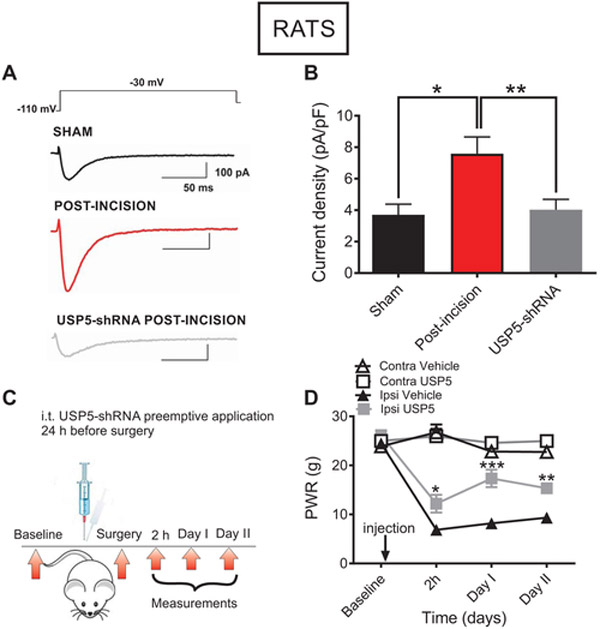Fig. 6. In vivo silencing of the deubiquitinating enzyme USP5 reduces T-current densities and mechanical hyperalgesia in rats post-incision.
A. T-currents (Vh −110 mV, Vt −30 mV) in representative DRG cells from the sham (black trace), incised untreated (red trace) and incised animals that were pretreated with USP5-shRNA (gray trace) groups. B. T-current densities in sham animals (balck bar), 48 h post-incision untreated group (red bar), and 48 h post-incision group that received i.t. injection of USP5-shRNA 24 h before plantar incision (gray bar); n=25 cells from 5 animals in USP5 group, n=21 cells from 10 animals in untreated incised group, n=14 cells from 10 animals in sham group; *P<0.05, **P<0.01, Ordinary one-way ANOVA, p=0.012 and p=0.007, respectively. Each data point represents mean ±SEM. C. A time-course of the in vivo experiment: baseline PWRs were measured during two days before surgery. One day before surgery, shRNA-USP5 was injected i.t. in rats. After surgery, baseline paw responses to mechanical stimulus were measured at 2 h, as well as on Days I and II post-incision. D. Mechanical hypersensitivity to a punctate stimulus after plantar incision in rats with selective knockdown of USP5, and in the vehicle group (n=7-8 animals per group; *P<0.05, **P<0.01, ***P<0.001, two-way RM-ANOVA followed by Sidak’s post-hoc test: 2 h post-incision (p=0.014), Day I post-incision (p<0.001); Day II post-incision (p=0.004). Each data point represents the average thresholds for paw withdrawal response (PWR) ± SEM.

